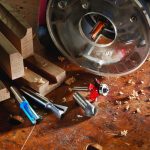We may receive a commission when you use our affiliate links. However, this does not impact our recommendations.
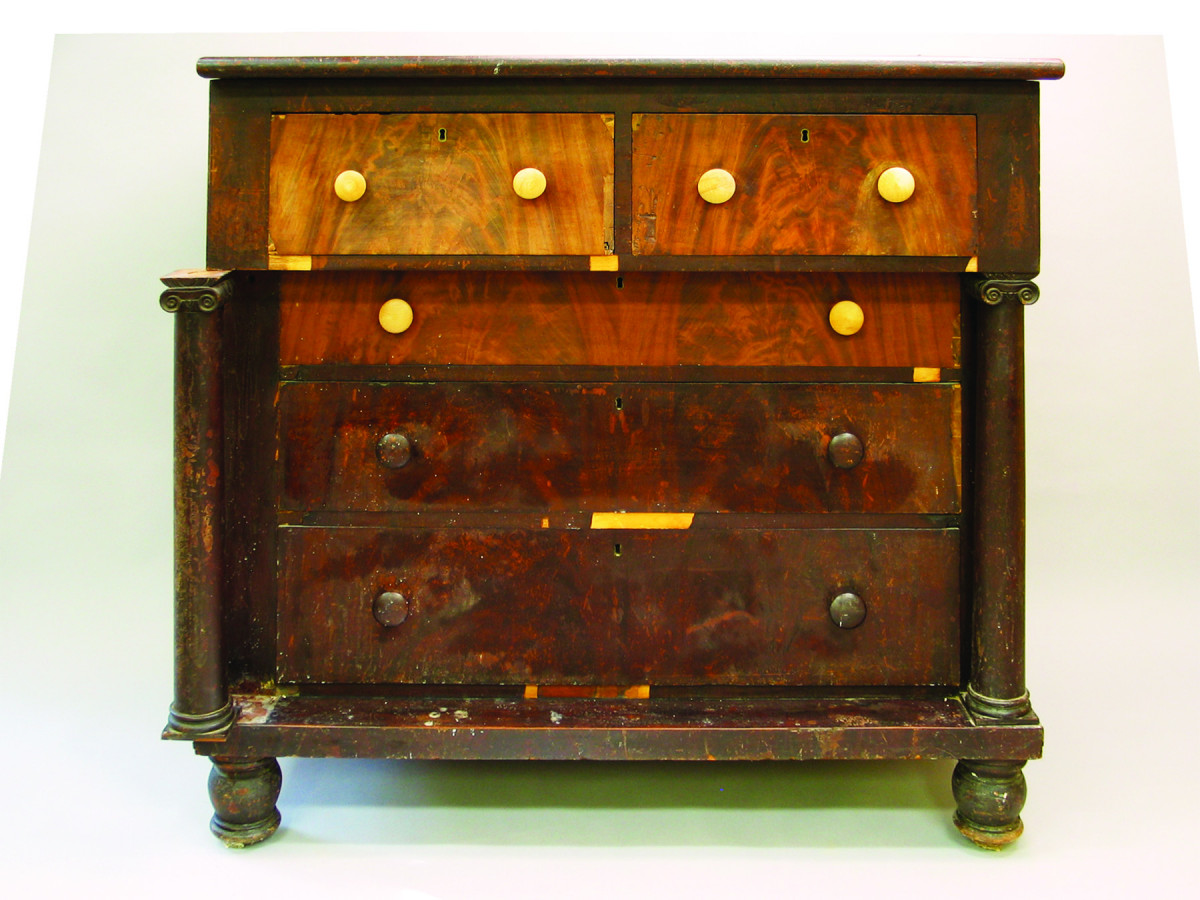
Veneer separation. All the light-colored areas between the drawers (and some on the drawers) of this Empire piece show places where veneer has peeled. It was glued vertically to the horizontal rails. As the glue aged and became brittle, it couldn’t keep up with the contrary wood movement.
Cracking, crazing and physical wear have specific causes and remedies.
Everyone who buys, sells, works on or collects old furniture, or who has some in their house, has to be concerned with deterioration. It’s staring them in the face every time they look at the furniture.
Totally stopping the deterioration isn’t possible, but it can be slowed. To do this you need to understand its causes.
Wood Deterioration
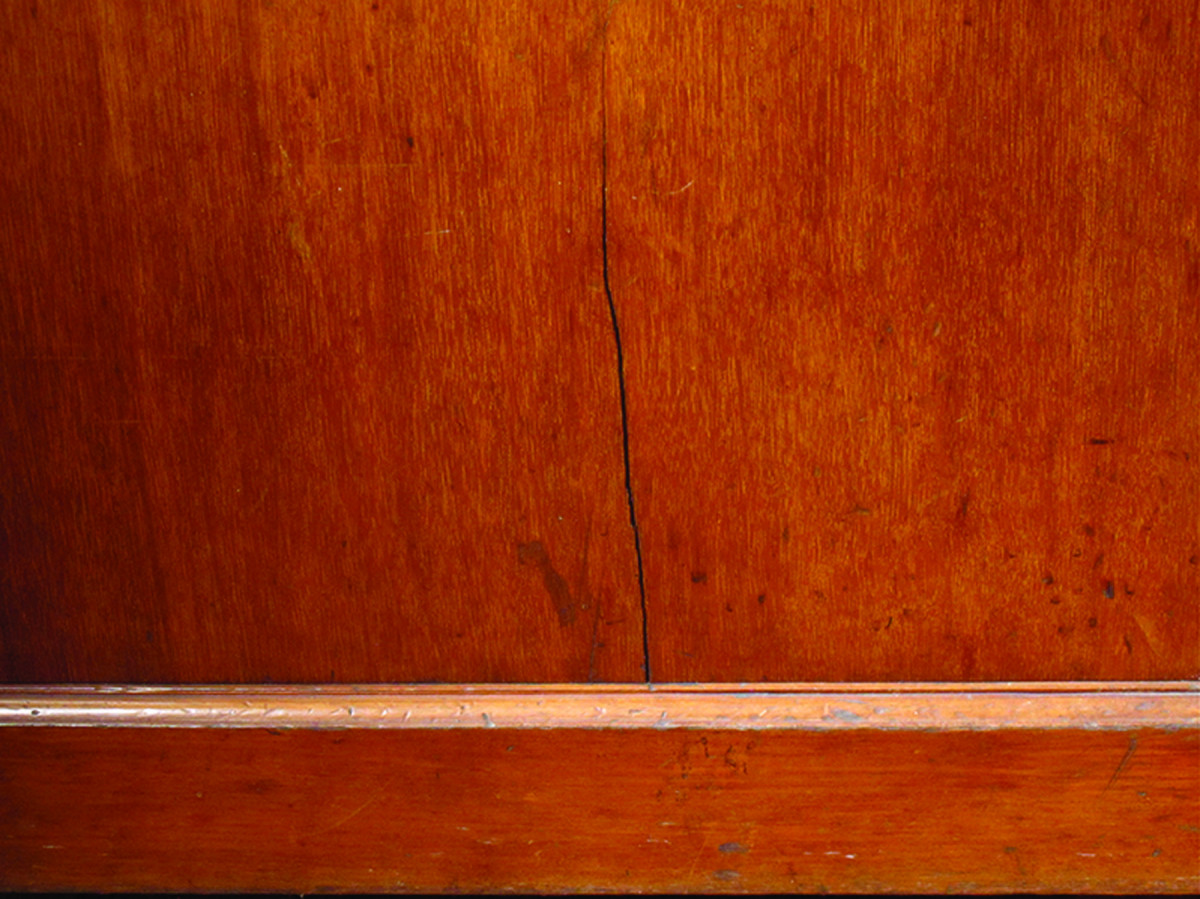
Split. The solid mahogany side of this mid-19th-century desk shrank in the drier air of a modern building. Because the side was attached to a perpendicular baseboard, shrinking was retarded so the side split.
Though indoor furniture isn’t exposed to rain or direct sunlight (the elements that destroy exterior wood), indoor wood still warps, splits and separates one board from another. The primary cause is wood movement – the shrinking and swelling of wood brought on by changes in relative humidity.
In most parts of the country, relative humidity inside a house is usually fairly high in spring and summer and low in winter when the house is closed up and the heat is on. Heating lowers relative humidity because it increases the amount of moisture air can hold. The absolute amount remains the same, but the relative amount declines.
The most obvious example of the problem occurs in wood windows and doors. In the spring and summer they jam because the wood has swollen to reach equilibrium with the moisture in the air. In the winter they open and close easily. Those with an exterior exposure let in cold air.
Because wood shrinks and swells far more across the grain than along the grain, joint failure and veneer separation are almost inevitable when the glue ages and becomes brittle. Stresses caused by leaning back in chairs, for example, speed the failure.
Contrary wood movement is also responsible for much of the splitting that occurs. For example, the grain direction in table rails, drawer runners and baseboards typically runs perpendicular to the grain direction of the tabletops or cabinet sides they’re attached to.
Long term, wood in old furniture usually has shrunk because buildings are heated better today than they were in the past. The wood that had adjusted to the average humidity conditions in poorly heated buildings has had to readjust to much drier conditions in modern buildings.
Furniture brought here from Europe and Asia also suffers because of the greater prevalence of central heating here. Damage also occurs when furniture is moved within the U.S. from humid climates in the South to dry areas in the West, or vice versa.
What You Can Do
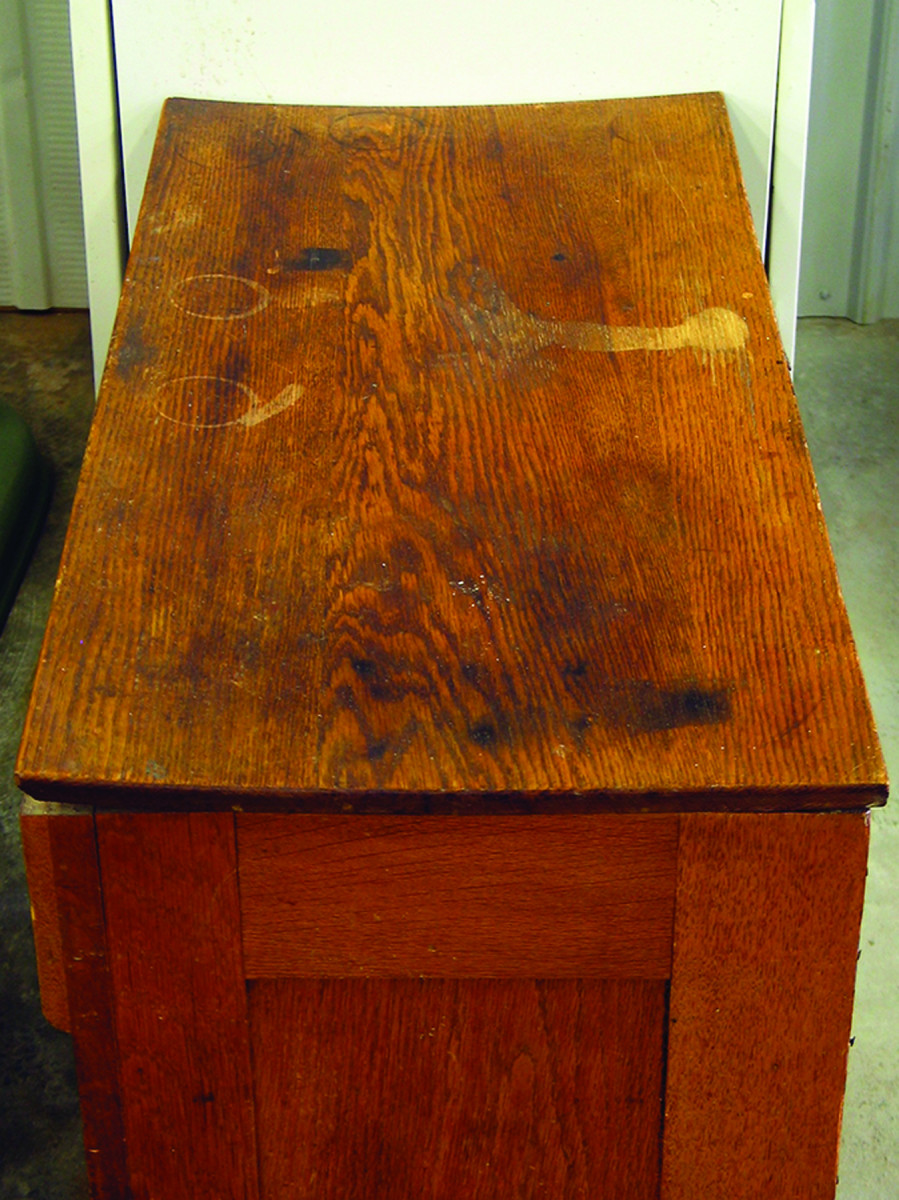
Warp. The finish on the top of this 100-year-old oak chest of drawers was clearly in such bad condition that water was able to penetrate and cause the wood to warp. Excessive wetting and drying out on just one side of wood causes that side to shrink, as typically happens with boards laid on exterior decks.
There are two procedures you can follow to keep your furniture’s wood movement, and the problems that come with it, to a minimum: Maintain a constant humidity in the surrounding air, and keep the furniture coated with paint or finish in good condition.
The first procedure is the best, but it is also much more difficult to achieve. You would have to live in a building with no functioning windows and invest in a high-quality heating and cooling system with the capability of controlling the humidity within a very tight range, usually about 50 percent. Better museums do this, at great expense.
The second procedure is not as effective but more practical. Paints and finishes in good shape slow the exchange of moisture into and out of the wood, so by the time the wood has moved enough to cause a problem, the season has changed and the movement has started back in the other direction.
Slower movement also allows glue more time to adjust so that separation of glue bonds is less likely even in extreme and rapid humidity changes.
Though thicker coatings (achieved with four or more individual coats) protect better, thinner coatings usually last longer because they are less likely to crack or craze. Finishes on very old furniture that has survived in good shape for a century or longer are usually very thin.
Unfortunately, the current marketplace for antique furniture is working against furniture’s long-term survival because refinishing is discouraged, most notably by the “Antiques Roadshow.”
The rule of thumb should be that furniture valuable or historically important enough to warrant being preserved with a very deteriorated finish should be kept in a museum or in museum-like conditions where the humidity is held constant. Otherwise, the furniture should be refinished if the existing finish is no longer serving its purpose.
Finish Deterioration
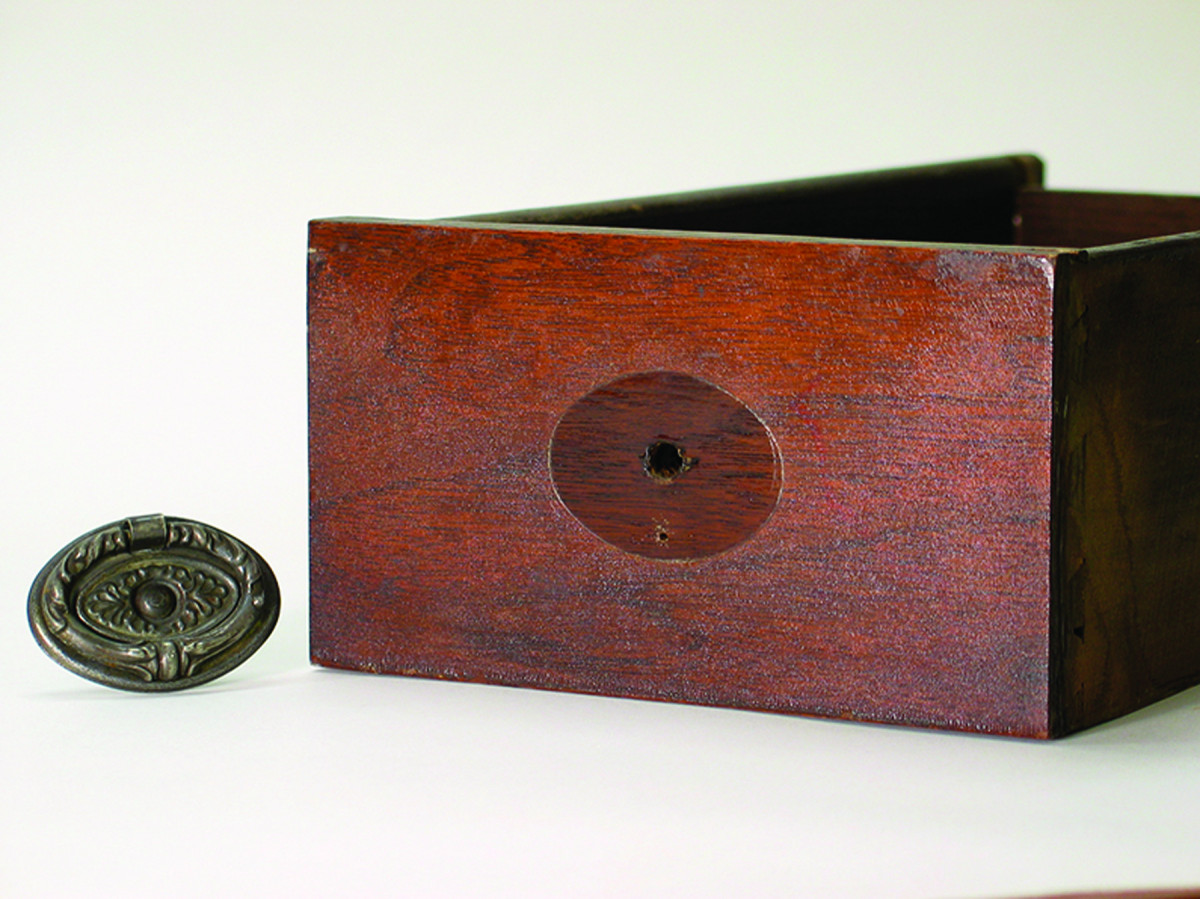
Hardware protects. The finish on this 100-year-old drawer front has crazed badly everywhere except behind the hardware, which protected the finish partially from oxidation and totally from ultraviolet light.
Even though finishes still allow moisture in vapor form (humidity) to pass through at a slow rate, they make excellent coatings for furniture because of their see-through and depth-enhancing qualities. But they lose these qualities because of exposure to oxygen, ultraviolet (UV) light and physical abuse.
Deterioration from oxidation is very slow, but UV light accelerates it and can dull and craze a finish within a few years if the exposure if severe. Glass windows block some of the UV light but not enough to be solely relied on.
Physical abuse in the form of scratches, water and heat damage, and undisciplined children and pets is also responsible for causing finishes to deteriorate.
What You Can Do
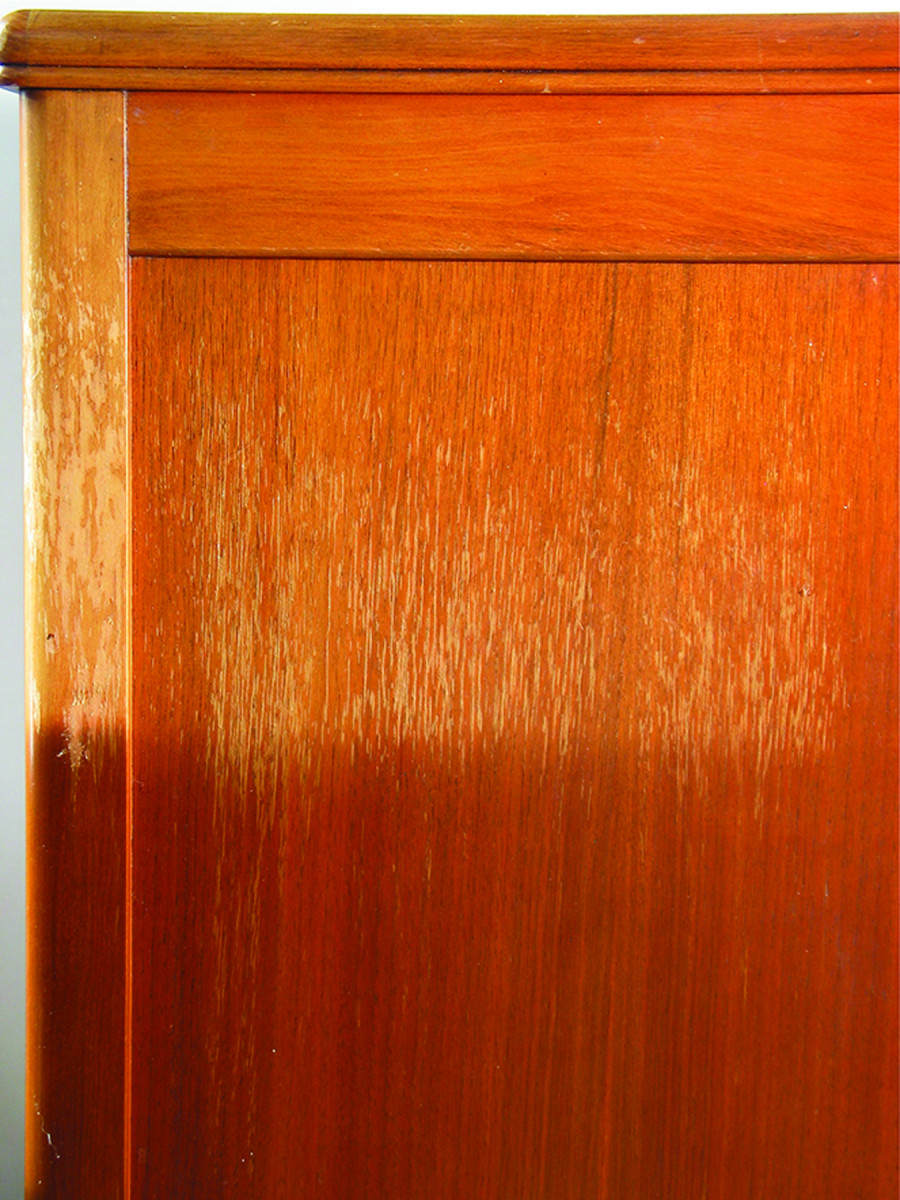
Sun damage. The back of this walnut chest was exposed to sunlight through a window for several years. The ultraviolet light faded the wood and broke down the finish. Where there was no exposure below the window, the color and finish remained in good shape.
You can’t do anything to slow the oxidation of a finish and still live with it. But you can slow the deterioration from light and physical abuse.
To reduce light exposure, place your furniture away from windows, or cover the windows with curtains or shades. You can also coat the windows with a transparent, UV-resistant material that will retard the penetration of UV light.
Also, use tablecloths when tables aren’t in use and teach children and pets to be nice to the furniture. When moving furniture from one house to another, use blankets or moving pads to protect the furniture from scratches.
Bob is the author of “Flexner on Finishing,” “Wood Finishing 101” and “Understanding Wood Finishing.”
Here are some supplies and tools we find essential in our everyday work around the shop. We may receive a commission from sales referred by our links; however, we have carefully selected these products for their usefulness and quality.








